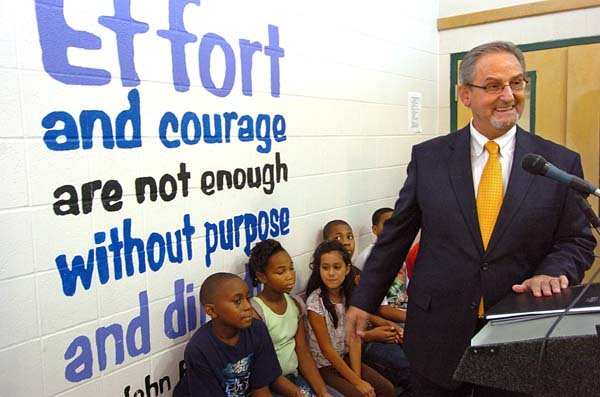LITTLE ROCK — Arkansas’ juvenile-justice system has overcome safety and education problems that for years concerned advocates and federal authorities, and now it’s an example for the nation, state leaders and others said Wednesday.
The improvements to the system and a focus on putting more children into community-based programs should eventually reduce the amount of money Arkansas spends on children in state custody, as well as reduce the rate of youth crimes, said Pat Arthur, a senior attorney with the San Francisco-based National Center for Youth Law.
Before that can happen, though, Arthur said, the state needs to reduce the number of youths placed in lockups for nonviolent offenses. The money that would have gone toward housing them could be pumped into community-based programs, which community providers have complained for years are underfunded.
Exactly how much money could be saved and diverted and when that could happen remain unclear.
Arthur, once a critic of the state’s juvenile-justice system, came to Arkansas on Wednesday to support state leaders who discussed improvements made so far.
“I came across the country to congratulate Arkansas on the progress it’s making toward reforming it’s juvenile-justice system,” Arthur said during a news conference in Little Rock. “The work being done here is indeed a model for other states around the nation.”
Gov. Mike Beebe said that’s high praise from a woman who came to Arkansas four years ago ready to file a class-action lawsuit over the conditions of the state’s lockups for youthful offenders.
“She came to do the only thing she knew how to do,which was to effectuate change from the courtroom, because nothing else had worked and progress had not been made,” Beebe acknowledged. “Now she’s selling Arkansas to the rest of the country because of the changes that have been made.”
Arthur said she’s happy to see what the state has accomplished because she feels the youths in state custody are safer and their basic needs - including a good education - are being met. That, according to investigations by advocacy groups and the U.S. Department of Justice, wasn’t always the case.
To address those problems, the state Department of Human Services’ Youth Services Division organized a 50-person task force to help come up with ideas to improve the system.
Youth Services Division leaders also reduced the number of children sentenced to the Arkansas Juvenile Assessment and Treatment Center (formerly known as the Alexander Juvenile Correctional Facility) and hired a new company to run it.
The center had a history of abuse, mismanagement and educational shortfalls that landed it under investigation by the Department of Justice. The Youth Services Division and the Justice Department signed a settlement agreement in 2003 that ended the investigation but allows for periodic visits by the federal agency.
“When I first started here, it was somewhat of a dysfunctional system,” acknowledged Ron Angel, director of the Youth Services Division since2007. “There were a lot of people fighting about what should be done and how it should be done.”
Creating the task force and persuading juvenile-court judges across the state to sentence children to alternative treatment programs helped change that, Angel and Arthur said.
“We’ve shifted our thinking in how we’re dealing with these kids,” Angel said.
During the fiscal year that ended June 30, the state saw 105 fewer youths sentenced to a state facility than it did the previous year.
Angel said he sees that as a sign that judges are sending more youths to community-based programs that offer counseling, rehabilitation, educational aid and other assistance to children at risk of winding up in state custody. Other states, such as Illinois and Pennsylvania, already have moved toward this approach.
Seventeen-year-old Jacob Hudman, a former drug user who ended up in state custody, said more judges should use that approach.
“Rehabilitation first and incarceration second is a big deal, and I can attest to that,” Hudman said.
When he spent time in juvenile-detention centers, he said, he “sat around with other miscreants” talking about the bad things each other did. Once he was sent to a community program, that changed.
“I can tell you I was in a very dark place clouded by substance abuse,” Hudman said. “It has not been an easy road, but now I am proud to say that I am a college student.”
Front Section, Pages 1 on 08/05/2010
